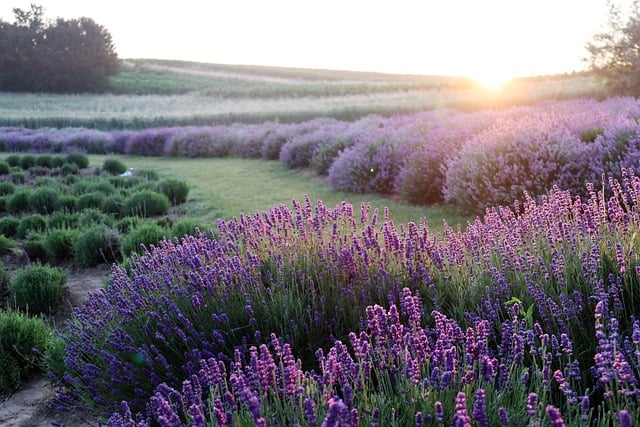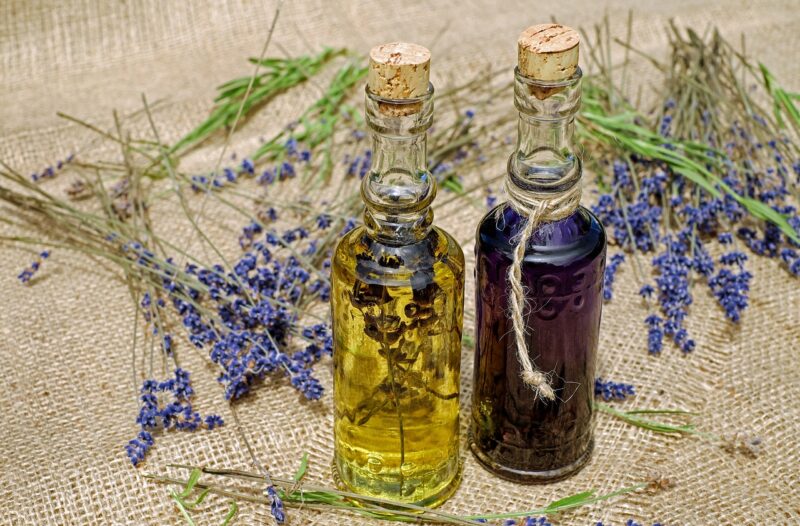Are Lavender Leaves Edible? Exploring the Culinary Uses and Benefits of Lavender
Lavender, with its enchanting fragrance and vibrant purple flowers, is a favorite in gardens and homes alike. Known primarily for its aromatic qualities and contributions to essential oils, lavender is often overlooked for its leaves. The question on many culinary adventurers’ minds is, “Are lavender leaves edible?” Join me as we explore the answer to this inquiry, diving into not only the edibility of lavender leaves but also their culinary applications, nutritional benefits, and usage in a variety of dishes.
Are Lavender Leaves Edible?

The short answer is yes, lavender leaves are indeed edible, although they are used less frequently than the flowers. While the leaves do not possess the intense flavor profile of the blossoms, they offer a subtle herbal note that can enhance dishes when used thoughtfully.
Flavor Profile
Lavender leaves deliver a unique taste—earthy, slightly bitter, and green, akin to rosemary or sage. This complexity is why they are sometimes used sparingly in cooking. Unlike the flowers, which are sweet and aromatic, the leaves provide a different culinary experience. Their flavor can be strong, so moderation is key when incorporating them into dishes.
Nutritional Benefits of Lavender Leaves

In addition to their culinary potential, lavender leaves offer several nutritional and health benefits. Here are some noteworthy aspects:
Rich in Antioxidants
Lavender leaves are rich in antioxidants, which play a critical role in combatting oxidative stress in the body. Antioxidants help neutralize free radicals—unstable molecules that can cause cellular damage and contribute to chronic diseases.
Anti-inflammatory Properties
The leaves, like the flowers, contain compounds known for their anti-inflammatory effects. These properties can help reduce inflammation in the body, potentially lowering the risk of certain diseases.
Digestive Health
In traditional herbal medicine, lavender has been used to aid digestion. The leaves can be consumed in small amounts to promote digestive health, providing relief from issues like bloating and gas.
Aromatherapy Benefits
While this post focuses on the culinary uses, it’s worth noting that the aroma of lavender leaves contributes to the relaxation effects associated with the plant. Flavoring foods with lavender can impart a sense of calmness during meals.
Culinary Uses of Lavender Leaves
Now that we understand the edibility and benefits of lavender leaves, let’s dive into how they can be used creatively in the kitchen.
1. Infusions and Oils
One of the simplest ways to enjoy lavender leaves is in infusions. To make a lavender leaf infusion, steep fresh or dried leaves in hot water for about 10-15 minutes. This herbal tea can be enjoyed alone or blended with other herbs for a more complex flavor profile. You can also create flavored oils by steeping lavender leaves in olive oil or other base oils, which can be drizzled over salads or used in marinades.
2. Seasoning for Meats
Lavender leaves can be a fantastic seasoning for meats. When used sparingly, the leaves lend an aromatic flavor to grilled chicken, lamb, or pork dishes. A simple herb rub using chopped leaves, garlic, and olive oil can provide a captivating depth of flavor.
3. Flavoring Soups and Stews
Adding crushed lavender leaves to soups or stews can introduce a lovely herbal note, especially in vegetable-based dishes. A small handful added during the simmering process allows the flavors to infuse without overpowering the dish. Consider pairing with root vegetables for a heartwarming, earthy soup.
4. Salads and Dressings
Lavender leaves can add a unique twist to salads. For a refreshing summer salad, incorporate finely chopped leaves into a vinaigrette with lemon juice, honey, and mustard. The result is a fragrant and flavorful dressing that enhances the greens without overwhelming them.
5. Baking
For those with a sweet tooth, lavender leaves can be incorporated into baked goods. Finely chop the leaves and mix them into batter for cakes, muffins, or scones for a hint of herbal complexity. They pair beautifully with flavors like lemon, making for a delightful combination.
Examples of Lavender Leaf Recipes
To help inspire questions about culinary applications, here are a few distinctive recipes utilizing lavender leaves.
Lavender Leaf Infused Olive Oil
Ingredients:
1 cup olive oil
¼ cup fresh lavender leaves (washed and dried)
Instructions:
In a small saucepan, heat the olive oil over low heat.
Add in the lavender leaves and let them simmer for about 10-15 minutes, ensuring the oil doesn’t bubble too much.
Remove from heat and allow to cool completely.
Strain through a fine-mesh sieve into a clean bottle.
Store in a cool, dark place and use for drizzling over salads or adding to marinades.
Lavender Leaf Chicken Marinade
Ingredients:
2 boneless chicken breasts
2 tablespoons chopped lavender leaves
3 tablespoons olive oil
Juice of 1 lemon
Salt and pepper to taste
Instructions:
In a bowl, mix the olive oil, lavender leaves, lemon juice, salt, and pepper.
Add the chicken breasts and coat well with the marinade.
Let marinate in the fridge for at least an hour, ideally overnight.
Grill or bake the chicken until cooked through, serving with roasted vegetables.
Lavender Leaf Bliss Balls
Ingredients:
1 cup almonds
1 cup medjool dates, pitted
2 tablespoons finely chopped lavender leaves
1 tablespoon honey (optional)
A pinch of salt
Desiccated coconut for rolling
Instructions:
In a food processor, blend the almonds until finely ground.
Add the dates, lavender leaves, honey, and salt, and process until it forms a sticky mixture.
Roll the mixture into small balls and coat with desiccated coconut.
Refrigerate for at least 30 minutes before serving.
Tips for Using Lavender Leaves
Start Small: Because the flavor can be somewhat strong, begin with a small amount of lavender leaves and adjust according to your taste preferences.
Pairing Flavors: Lavender leaves work well with various herbs, such as thyme, rosemary, and sage. Combining these herbs can create complex flavor profiles in your dishes.
Fresh vs. Dried: While fresh lavender leaves provide a more vibrant flavor, dried leaves can be used as well. If using dried leaves, be aware that the flavor may be more concentrated.
Use in Moderation: As with any herb, using lavender leaves too generously can overpower a dish. Aim for balance to ensure that the lavender complements other ingredients.
Growing Lavender for Culinary Use

If you’re inspired to use lavender leaves in your cooking, consider growing your own lavender plants. Not only is it a delightful gardening experience, but it also guarantees a fresh supply of leaves.
Ideal Growing Conditions
Sunlight: Lavender thrives in full sun and requires at least six hours of direct sunlight daily.
Soil: A well-draining soil is crucial. Sandy or gravelly soils with a pH between 6-7 are ideal.
Watering: Lavender prefers drier conditions, so be sure not to overwater. Allow the soil to dry out between waterings.
Harvesting Lavender Leaves
To harvest lavender leaves, wait until the plant is well-established, ideally in the spring or early summer. Use clean scissors or garden shears to snip off the leaves, but remember to leave enough foliage for the plant to thrive.
After harvesting, wash the leaves gently and pat them dry before use. You can store them in an airtight container in a cool, dry place or use them fresh.
Conclusion: Enjoying Lavender Leaves
In conclusion, lavender leaves are indeed edible and can serve as a wonderfully unique ingredient in various dishes. Their subtle flavor, combined with numerous nutritional benefits, makes them an excellent addition to culinary practices. Whether you incorporate them into infusions, use them as a seasoning for meats, or even bake with them, the versatility of lavender leaves can enhance your cooking experience.






